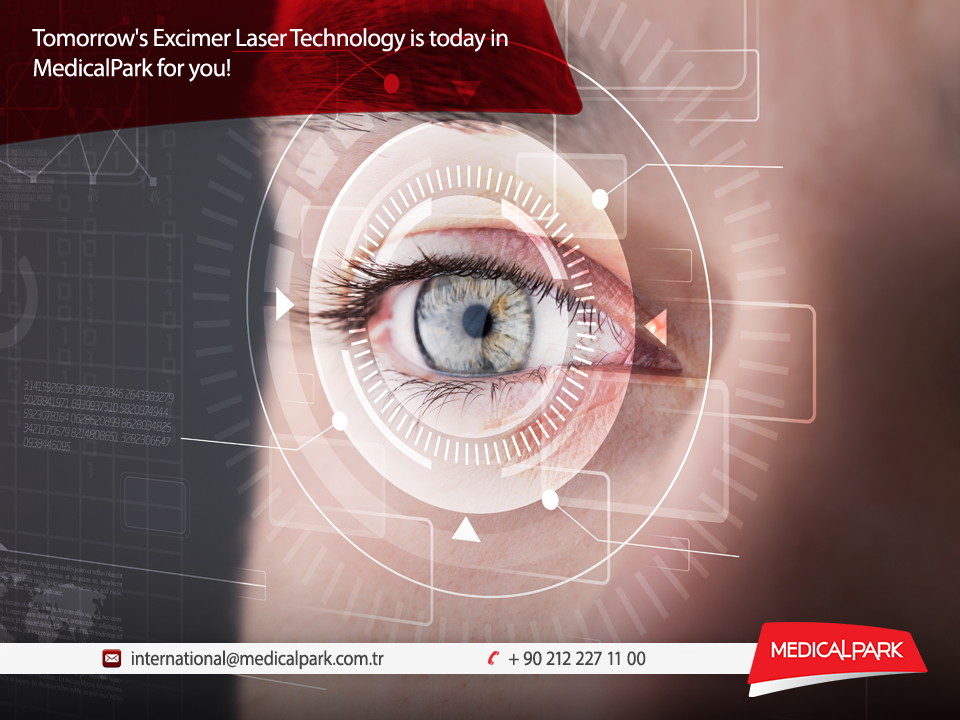TREATMENT WITHOUT TOUCHING THE EYE WITH NON-CONTACT EXCIMER LASER IN MEDIKAL PARK HOSPITAL GROUP TURKEY
What is No Touch (contactless) Laser?
In classic laser therapy, which is applied to get rid of glasses and contact lenses for an extended period of time, contact with the eye is inevitable. With laser therapy, administered by a method called TransPRK (No Touch or non-contact technique), the device does not touch the eye on which the treatment is applied at all. All you have to do is stare at a distant light source for seconds. The technique is applicable for myopia, hyperopia and astigmatism.
What is the difference between contactless TransPRK technique and other methods of laser therapy?
In classic laser therapies such as LASIK and intraLASIK (femtosecond laser), the corneal tissue of the eye is cut with a special scalpel or laser, and then the treatment is applied. In the PRK technique, the outer surface of the eye is treated with an alcohol solution and the cornea is "scratched", after which the treatment is carried out. None of these procedures are used in non-contact therapy, which is performed in a single step. In this method, it is sufficient to look into a distant light source for less than 50 seconds. The new technique limits the risk of progressive thinning of the cornea and reduces to almost zero the likelihood of developing high astigmatism after surgery, conditions that can be seen after LASIK and iLASIK procedures, and are called ectasia. What's more, this technique completely eliminates the risk of retinal tears that are sometimes caused by the vacuum ring used in mandatory LASIK and femtosecond methods.
Why contactless (No Touch) Laser?
- The treatment takes place within seconds.
- Without resection of the membrane, the integrity of the eye and no segment of it is compromised.
- The epithelium covering the eye is not treated with alcohol and is not "scratched".
- No pain is felt during treatment.
- Both eyes can be treated in one session.
- The eyes do not need to be closed after treatment.
- Suitable for patients with thin corneas.
- The risk of ecstasy is almost zero.
- Zero risk of retinal tear.
- The procedure is suitable for patients with nearsightedness (myopia), farsightedness (hypermetropia) and astigmatism.
- The so-called dry eye syndrome, which occurs after laser treatment, is less pronounced and shorter lasting in this case.








